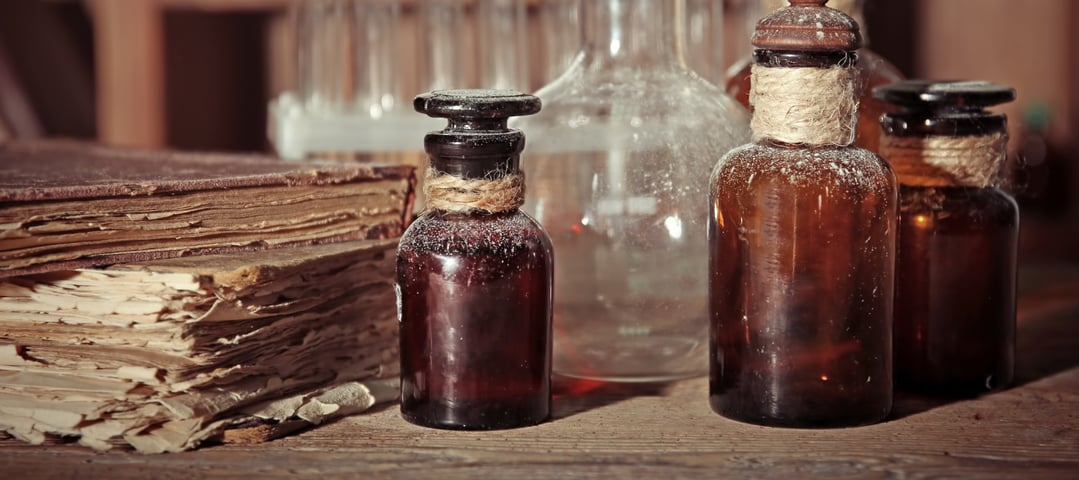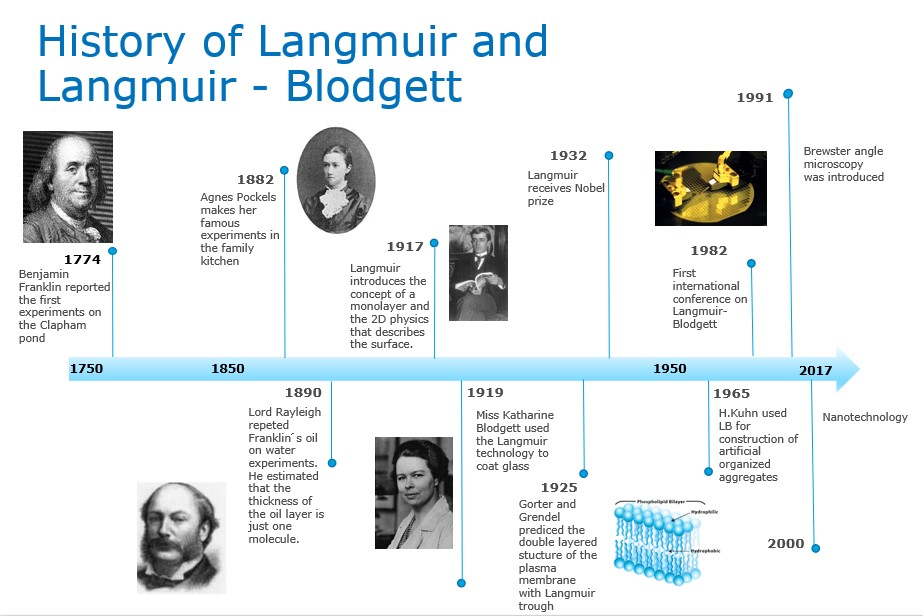
Benjamin Franklin’s report to the British Royal Society in 1774 is a good starting point for the history of Langmuir or Langmuir-Blodgett films. In his report Franklin stated:
“At length at Clapham where there is, on the common, a large pond, which I observed to be one day very rough with the wind, I fetched out a cruet of oil, and dropped a little of it on the water. I saw it spread itself with surprising swiftness upon the surface the oil, though not more than a teaspoonful, produced an instant calm over a space several yards square, which spread amazingly and extended itself gradually until it reached the lee side, making all that quarter of the pond, perhaps half an acre, as smooth as a looking glass.”
Had Franklin known that the maximum extension of an oil film on water represents a layer one molecule thick (2 nm), he would have found out that a teaspoonful (2 ml) would cover an area of 2000 m2, which is half an acre as he suspected. Benjamin Franklin had created a ‘thin film’ – more precisely, a monolayer at the air-water interface.
In the late 19th century, Agnes Pockles, a German pioneer in chemistry, discovered the influence of impurities on the surface tension of water by using a rudimentary surface balance in her kitchen sink. This system was a precursor to the Langmuir trough.

In the early 20th century Irving Langmuir, an American chemist and physicist, was the first to perform systematic studies on floating monolayers on water. He was the first to give a modern understanding of monolayer structure at the molecular level, in particular that the molecules show a preferential orientation. The systems to study floating monolayers on water are now named after him: Langmuir films.
In 1932 Irving Langmuir was awarded the Nobel Prize for his work on surface chemistry. Langmuir was also the first to show that monolayers can be transferred from the air-water interface to solid substrates for further study. Together with his assistant, Katherine Blodgett, he showed that it was possible to go further and to deposit many monolayers onto the same substrate, thus building up a multilayer film of any required thickness. Deposited monolayers of any thickness are now known as Langmuir-Blodgett films or LB films.
To celebrate the 90th anniversary of Langmuir’s Nobel Prize, Biolin Scientific organizes an online user event on the 6th of October. In this event, we gather scientists around the World to share their knowledge of Langmuir and Langmuir-Blodgett techniques. Please use the link below to check out the agenda and register.
Langmuir film can be defined as an insoluble monolayer of atoms, molecules, or even nanoparticles floating at the liquid-gas interface (or liquid-liquid).
